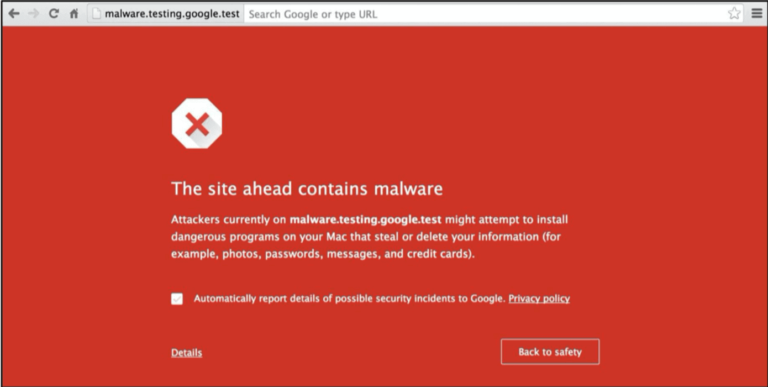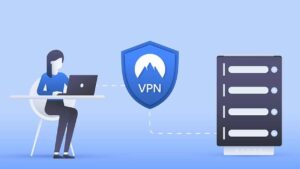URL Blacklist: What it Means & How to Fix It

A URL blacklist is a common occurrence on the Internet and it happens once a web authority suspects a website of engaging in malicious activity.
URL blacklisting is a measure that tries to make the web a safer place for the average user. Since most users are unaware of the dangers that lurk out there.
If any website is found to engage in malicious activity, the web authority will promptly blacklist the site. Such malicious activities include malware distribution, phishing, and other dishonest tactics.
This post takes a closer look at the practice to show you exactly how it happens. Plus, it looks at what you can do to prevent your site from getting blacklisted and suffering its many consequences.
What is URL Blacklisting?
URL blacklisting simply means the inclusion of a URL (a web address or Uniform Resource Locator) in a list of potentially harmful web addresses. This list forms part of a security platform to help protect users from the dangers of the Internet.
URL blacklisting can also occur for other reasons, such as when enterprises limit certain web addresses that hamper the productivity of their employees. However, this post looks at general blacklisting for security purposes.
Web authorities help the general population by making their database available to browsers. So, once you request a webpage, your web browser queries the security database to see if that URL is safe or not. And when the URL is blacklisted, the browser tries to warn or stop you from visiting it.
Indications of a Blacklisted Site
The major indicator of having a blacklisted web property is significantly reduced traffic. If you notice an over 80% sudden drop in organic traffic to your site, then you have either lost search engine rankings or your site got blacklisted.
Another way to be certain that you have a blacklisted site is to check the site’s status with the relevant web authorities. This includes querying the Google Safe Browsing tool, among others.
Finally, frequent cybersecurity scans can point out infections and other issues on the website that might sooner or later, get the property blacklisted.
Causes of Website Blacklisting
Many activities can lead to your website getting blacklisted. The goal for web authorities is to secure the users’ devices, maintain their privacy, and offer a good user experience.
Following is a closer look at the major reasons that can cause your website to get blacklisted.
- A Hacked Website – If your website gets hacked and major web platforms find out, then they will de-list the address. While most professional hackers try to maintain a low profile while keeping their eyes on the prize.
More juvenile hackers often try to draw attention to their exploits to earn some praise. The goal, therefore, is to regularly use a professional service to monitor malicious activity against your site, especially when it is a huge operation. Because you never know. - Phishing / Social Engineering – With phishing, a malicious actor tries to extract information from a web user, using a cloned page on a website. And most times, the average user will be oblivious of what is going on.
Social engineering is a more refined method of extracting personal information from web users. And it can include email attacks, social media requests, and other online activities that lead a user to lower his guard, and thereby enable a malicious actor to steal his credentials.
Once a web authority concludes that any web property is involved with such practices, then it is left with no further option than to blacklist the URL involved. - Trojan / Malware – If your website is involved in Trojan software or malware distribution, then it will surely get blacklisted. Trojans are malicious codes that hide inside other helpful software. They then swings into action once you install the infected software on your system.
Malware refers to malicious software in general. Malware can be a virus, spyware, ransomware, or trojan. The critical issue here is that the domain is involved in malware distribution. - SEO Spam / Spamdexing – This is a shady tactic that involves search engine marketers that hack into a popular or high-ranking website. They then add their marketing message to the mix. For instance, when you find a university blog with a .edu domain selling male-enhancement pills.
The goal of such attacks is often to gain fast visibility on search engines and to use it to market items that will otherwise prove impossible to achieve. Meanwhile, the website operator or manager remains clueless about what is going on.
The only way to identify spamdexing attacks is through regular scans of your site and traffic stats analysis. - Maliciously Created / Intent to Deceive – Web authorities can also blacklist a domain if its content is otherwise found to be malicious or intends to deceive unwary visitors. As with the other situations, the responsibility of a website’s content lies with its owners.
List of Popular Blacklist Databases
Blacklists exist for search engines, desktop anti-virus systems, and even email servers. There are many blacklist databases out there, but here are the most popular ones.
- Google Blacklist – The Google search engine detects and blacklists about 10,000 websites daily. Many software programs rely on this list for their users’ security, and they include Firefox, Chrome, and Apple’s Safari browsers.
- Bing Blacklist – The Bing search engine also runs a security blacklist.
- Yandex – Yandex, the Russian search giant also maintains a security blacklist.
- Norton Safe Web – Norton Anti-virus maintains a blacklist of unsafe websites as well. Its list is populated by users, who can mark a website as containing spam.
- McAfee WebAdvisor – McAfee’s WebAdvisor is a security service that protects its users by identifying websites that may contain spam or malware.
- SpamHaus Block List – This database contains the IP addresses of mail servers that host malware or spam. If you are having issues sending email from your web server, then check if it is not listed on SpamHaus first.
How to Fix a Blacklisted Site
If you find that your website is blacklisted by Google or other web authorities. Then you need to take the necessary steps to fix the problems and get your web property back in good standing.
To do this, you will need to take these 3 steps.
Step 1. Scan the site with a good security scanner, such as Sucuri or Malcare.
Step 2. Fix the detected problems and infections. Sucuri and Malcare can handle that for you.
Step 3. Submit your site to the web authority for review and whitelisting. Again, Sucuri and Malcare can do this automatically.
For review, you can manually submit your site to Google at: https://search.google.com/search-console/security-issues
For McAfee, head over to: https://www.trustedsource.org
And for Yandex, it is: https://webmaster.yandex.com
How to Prevent Your Website From Getting Blacklisted
A malicious actor needs access to your website to install malicious code or content. Though this access is often through hijacking the admin’s account, it can also include XSS attacks, database attacks, and other available exploits for the target system.
The truth, therefore, is that hardly any website is 100% safe, as there are sure to be security loopholes. But by employing the best practices below, you can guarantee about 99% security for your site.
- Use a good host with good security. Many cheap hosts run sub-standard infrastructure, and this can make your website more exposed and vulnerable to attacks.
- Use strong passwords. The use of weak passwords like “12345” is a major reason behind most website hacks. A good password should mix numbers with letters and special characters.
- Use only safe and updated plugins. Over 90% of all WordPress vulnerabilities are linked to badly authored plugins. So, be careful which plugins you use, and always go for the updated versions. As they often come with bug and security fixes.
- Avoid unsafe software. You should always avoid using software that you cannot confirm its author’s reputation. This applies especially to cracked software versions.
- Consider automatic cybersecurity services. These services will regularly scan your website in search of hacks, malware, and other threats. Each service is different though.
List of Popular Security Scanners
Below is a list of the most popular security scanners that can help to keep your website safe for you and your visitors.
- Sucuri – A cloud-based system that detects and fixes malicious activities for free.
- Malcare – Offers a 1-click detection and removal of malware.
- Astra – All-in-one and hassle-free security suite.
- Wordfence – Designed specifically for WordPress sites.
Conclusion
Your website is your business storefront, so getting it blacklisted can be damaging to your business. It is not the end of the world though, as you have just seen how to get the blacklisting removed.
More important, however, is maintaining good security on the website. And you do that by following the best practices listed above.




